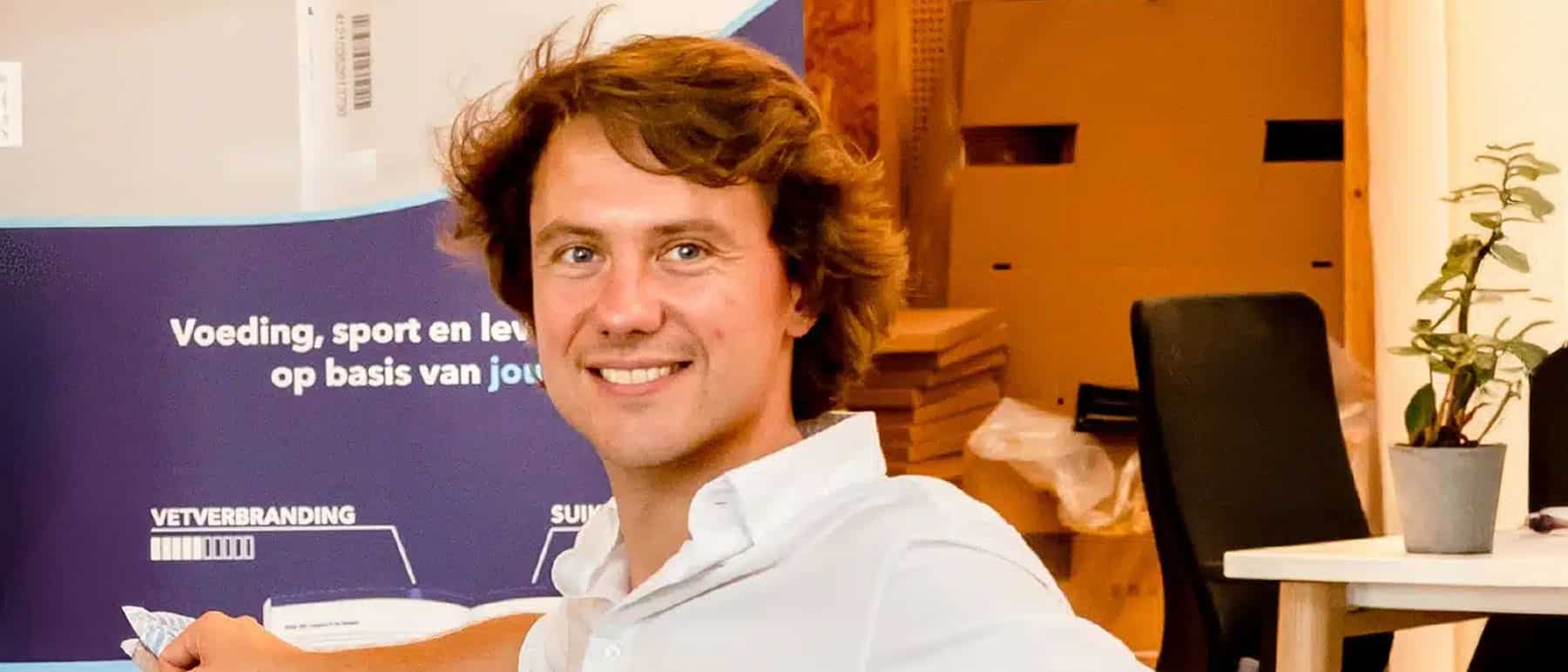How much courage do you need to slow down before you speed up? That question lingered after my conversation with Pieter Josson, co-founder and CEO of Biometriq. What he and his team do may seem obvious at first—helping dietitians with technology. But beneath that lies a rare combination of strategic discipline, ecosystem thinking, and the bravery to make different choices than the crowd.
From Analog to Digital
In 2019, Pieter Josson and Tijs Engelreist started Biometriq. They saw what many missed—a crucial health profession still working as if it were 30 years ago. Dietitians drowned in administration, lacked data insight, and could barely measure their impact.
Pieter: “It’s still an underdigitized profession. We fully invest in integrating the latest technologies into our platform, so dietitians can work more efficiently.”
The platform integrates DNA analyses, wearables, sensors, and questionnaires into one coherent picture to help professionals provide personalized advice. Today, over 330 dietitians in Belgium and the Netherlands use Biometriq, together guiding about 24,000 people.
Reflection
New technology only breaks through to the masses when it is integrated into existing routines. Rogers (2003) calls this the leap from early adopters to the early majority. Biometriq proves how crucial this connection is—the success lies not just in data and algorithms, but especially in how dietitians can use them in daily practice.
The Strategic Choice That Changed Everything
Where many digital health startups chose B2C, Biometriq consciously went B2B.
Pieter: “Many companies in digital health take a B2C approach from the start. Our luck was that we didn’t do that. That gave us a solid base.”
That choice provided stable income and time to refine the product. A simple database query yielded a sharp datapoint: 92% of end users are women. Such insights force segmentation and choices reaching beyond the first ring of customers.
Reflection
Christensen (1997) states that successful innovation starts from the job-to-be-done. Biometriq illustrates this: it’s not about software per se, but about making the dietitian’s job easier and more valuable. The insight that 92% of end users are women highlights how important segmentation and a sharp ICP are for sustainable growth.
From First Customers to Ecosystem Leverage
The early years were about cold calling and one-on-one sales.
Pieter: “We come from a very manual one-on-one sales approach. Now, we’re switching to much more event-led growth.”
It became clear that dietitians are just one link in a larger system of companies, mutual funds, and insurers. Instead of growing one customer at a time, Biometriq sought leverage in that broader network.
Reflection
Blank (2013) emphasizes proving product-market fit before scaling systematically. Biometriq did this via intensive one-on-one sales, then shifted to scalable, event-led models. Their story also shows effectuation (Sarasvathy, 2001): by leveraging unexpected connections along the way, they discovered growth potential in the broader ecosystem.
From Platform to Ecosystem
The answer is a two-sided marketplace: software for practitioners and a digital gateway for organizations.
Pieter: “On one hand, we offer dietitians software to work efficiently. On the other, we build a marketplace enabling organizations to digitally refer employees or members to the ecosystem.”
This creates value for companies—well-being, motivation, employer branding—and for mutual funds and insurers—prevention and referral.
Reflection
Platforms are more than products; they are infrastructures enabling interactions. Hagiu & Wright (2015) describe how multisided platforms generate value by connecting distinct groups. Shapiro & Varian (1998) add that network effects strengthen as more parties join.
Pioneering between Chaos and Structure
Pieter Josson: “I think we made a billion mistakes.”
The European market is still “immature” compared to the U.S., where consolidation and acquisitions are further along. Precisely there, Pieter sees opportunities: those who build wisely now could become the core of an integrated ecosystem.
Reflection
Entrepreneurship often means balancing mistakes and progress. Sarasvathy (2001) calls this effectuation: starting with the means you have and learning by doing. Biometriq also shows how co-opetition (Brandenburger & Nalebuff, 1996) opens opportunities: partnering with potential competitors can speed up ecosystem growth.
The Flywheel in Action
With a recent funding round and a modest profit last year, momentum is building.
Pieter Josson: “We want to expand to France, but always with respect for the ecosystem.”
This is what Jim Collins calls the flywheel—consistent, reinforcing actions that accelerate over time.
Reflection
Collins (2001) shows that growth rarely comes from a single big leap, but from repeated efforts that build momentum together. Moore’s Crossing the Chasm (1991) confirms why Biometriq first anchored its niche before rolling out more broadly.
Lessons from the Biometriq Cockpit
- Slow down before you speed up. First understand, then build, then scale.
- Ecosystem over competition. Position yourself as a facilitator, not a replacer.
- Scale through segment focus. Start with a niche, then broaden.
- B2B as a bridge to B2C impact. Organizations often reach more end users than direct B2C channels.
Conclusion
Biometriq shows how entrepreneurs win their first customers through personal contact, perseverance, and validation—and then break through by thinking in ecosystems, making sharp choices, and leveraging network effects.
First conquer the niche, then leverage the network, and eventually set the flywheel in motion.
The story of Pieter Josson and Tijs Engelreist proves that sustainable growth emerges when you start small, learn from mistakes, and have the discipline to reach beyond your first network.
References
- Blank, S. (2013). The Four Steps to the Epiphany. K&S Ranch.
- Brandenburger, A.M., & Nalebuff, B.J. (1996). Co-opetition. Currency Doubleday.
- Christensen, C.M. (1997). The Innovator’s Dilemma. Harvard Business School Press.
- Collins, J. (2001). Good to Great. HarperBusiness.
- Edvardsson, B., Holmlund, M., & Strandvik, T. (2008). Industrial Marketing Management, 37(3), 339–350.
- Hagiu, A., & Wright, J. (2015). Multi-sided platforms. International Journal of Industrial Organization, 43, 162–174.
- Moore, G.A. (1991). Crossing the Chasm. HarperBusiness.
- Porter, M.E. (1985). Competitive Advantage. Free Press.
- Rogers, E.M. (2003). Diffusion of Innovations (5th ed.). Free Press.
- Sarasvathy, S.D. (2001). Academy of Management Review, 26(2), 243–263.
- Shapiro, C., & Varian, H.R. (1998). Information Rules. Harvard Business School Press.
